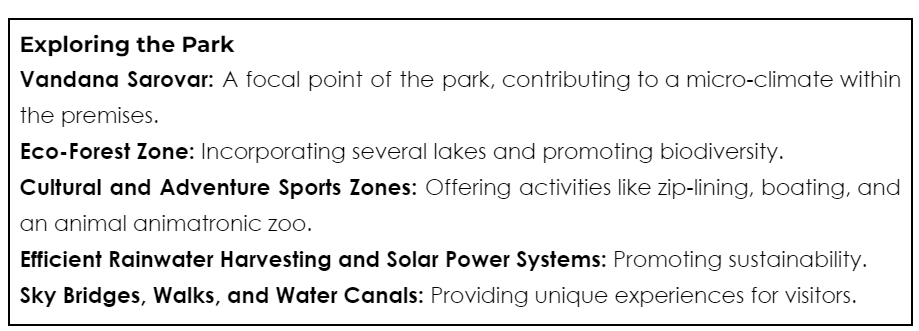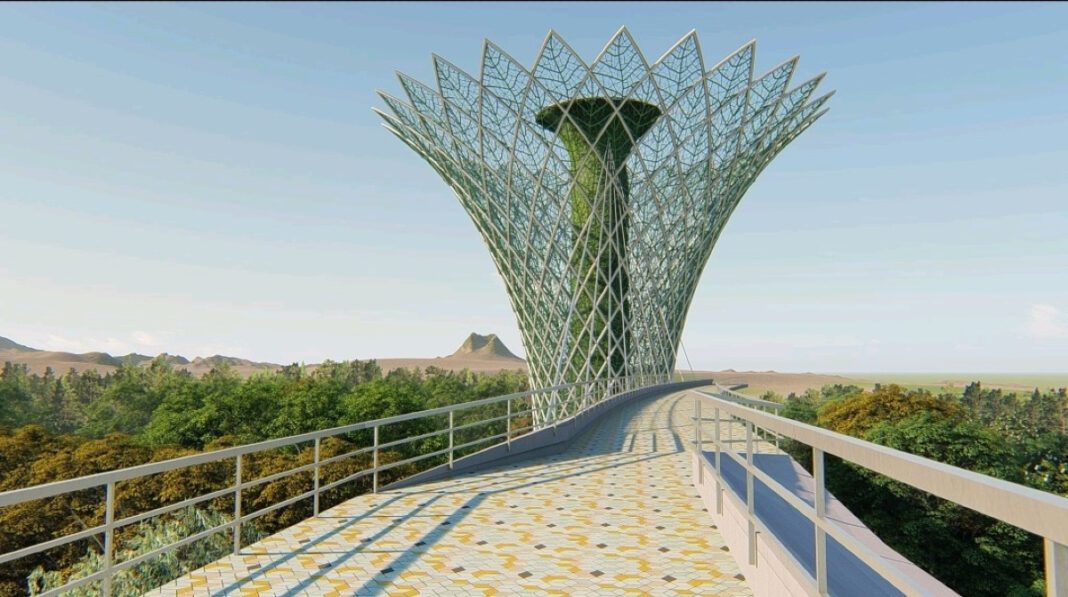The Bharat Vandana Park, an ambitious project by the Delhi Development Authority (DDA), is set to become a new landmark for Delhi residents. Spread across 220 acres in Dwarka’s Sector 20, the park is being developed at a cost of Rs 525 crore. The park will feature replicas of important monuments from different states and around the world, cultural and adventure sports facilities, and eco-friendly measures such as rainwater harvesting and solar power generation. It is expected to open to the public by March next year.
Design details
The park is conceptualised as a ‘mini India’ with 36 replicas of significant monuments from various states. These include the Sun Temple in Odisha, Charminar in Telangana, Kashi Vishwanath Temple and the Ghats of Varanasi in Uttar Pradesh, Ajanta and Ellora Caves in Maharashtra, the Viceregal Lodge in Himachal Pradesh, Victoria Memorial in West Bengal, Golghar in Bihar, and Hawa Mahal in Rajasthan. The replicas are constructed using the same materials as the original monuments, enhancing their authenticity.
The park spans 220 acres, with 98.17 acres dedicated to landscaped areas and 25.83 acres to water bodies and lakes. This includes a dense green zone made up of medicinal plants, contributing to the park’s eco-friendly and health-promoting environment. Glass domes are spread throughout the park, creating controlled environments for growing various plants. Lake-view restaurants are strategically located across the park, offering scenic dining experiences.
Key Features
The park is designed in the shape of India’s map, with different sections representing various regions. The site is divided into zones, each shaped like a lotus leaf, with specific functions and unique elements. Key structures and features include Vandana Sarovar, which serves as a focal point of the park, contributing to a micro-climate within the premises. The Eco-Forest Zone incorporates several lakes, promoting biodiversity, while the Cultural and Adventure Sports Zones offer activities like zip-lining, boating, and an animal animatronic zoo. Efficient rainwater harvesting and solar power systems promote sustainability. Sky bridges, walks, and water canals provide unique experiences for visitors.
Innovative Use
Tata Structura was primarily used to replicate the Gardens by the Bay Park structure similar to the one in Singapore. The project required hollow sections as the main component. Since, Tata Structura steel tubes traditionally has higher % elongation, they were ideal choice for this application with intense bending requirements. The structural elements included:
– CHS 250 mm x 10 mm
– RHS 300 x 150 x 10 mm
– CHS 125 x 4.8 mm
– RHS 240 x 120 x 6 mm
– SHS 132 x 132 x 4.8 mm
– SHS 60 x 60 x 4.8 mm
– SHS 250 x 250 x 8 mm
– SHS 180 x 180 x 6 mm
The overall construction of Bharat Vandana Park was managed by NKG Infrastructure Limited. One of the major challenges faced was to bend the pipes in such a way that it will not have any surface damages. Bending of steel pipes usually leads to fracture across cross section or weld to split open. This was negated by using Tata Structura steel tubes that had high ductility and made it possible to bend in such complex geometry.
Bharat Vandana Park is poised to be a major attraction in Delhi, offering a blend of cultural heritage, recreation, and eco-friendly initiatives. Its completion will mark a significant milestone in the city’s development, providing residents and visitors with a unique, immersive experience celebrating India’s diverse architectural and cultural heritage.

Fact File
Project: Bharat Vandana Park, Dwarka, New Delhi
Client: DDA- Delhi Development Authority
Consultant: Tech Project Consultants
Contractor: NKG Infrastructure
Manufacturer: Tata Structura
Supplier: Vikrant Iron Pvt Ltd
Quote
“Working on Bharat Vandana Park was one-of-a-kind experience as the project involved the usage of a complex tubular structure. However, I would have been happier if it was delivered as per the design which was slightly deviating from the designs that were proposed.”
Sushant Goel, Director, Eckersley O’Callaghan





